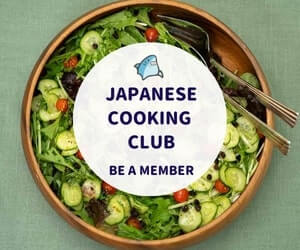
What is a hojicha latte?
Hojicha latte is a Japanese-style latte made with hojicha, a type of Japanese green
As you may know, the word “latte” is short for the Italian word “caffè latte,” which means “milk coffee.” The drink is made by pulling a shot of espresso and then adding steamed milk to it.
The milk is steamed to create a frothy texture, and a thin layer of foam is added on top. This creates a creamy, smooth, and slightly sweet drink that is well-balanced with the strong, bold flavor of espresso.
With the hojicha latte, we’re replacing the espresso with hojicha
And it works well because hojicha has a very strong bold flavor too.
Curious?
Read on!

What does hojicha taste like?
Roasting Japanese green
Although it comes from the same plant (Camelia sinensis), hojicha is very different from green
Hojicha really doesn’t have any of that.
Surprise?
In general, hojicha is less bitter than green
Tried a true cold brew yet?
In Japan, hojicha is a popular
Any time, really.
As you may know, Japan gets quite cold in the winter, when you’d love a hot cup.
And, brutally hot in the summer, where a cold cup of hojicha would be a delicious way to cool down.
(Just a bit.)
And yes, of course, hojicha can also be enjoyed as a base for a
The taste of hojicha is unique, and it can be extremely likeable for those who are not fond of traditional green teas.
Either way, it’s just plain oishii (delicious!)

Is hojicha latte sweet?
If you’re using properly steamed milk in your hojicha latte, it may have naturally been sweetened. If using a frother, it may be less so.
Here’s why.
Steamed milk vs frothed milk for lattes
When talking about cow’s milk they may be similar, but they have some key differences:
- Steamed milk is heated using a steamer wand, which is attached to an espresso machine. The wand is inserted into the milk, and the steam is released. First, the wand is kept on top to create a smooth and velvety texture. Then it’s submerged to fully heat the milk.
- Steamed milk is generally considered to be sweeter than frothed milk. The process of steaming milk raises the temperature enough to break down some of the lactose, which is the natural sugar found in milk, making the milk taste sweeter.
- Additionally, the heating process also gives the milk a smoother and creamier texture, which can also contribute to a perception of sweetness. The process of steaming milk makes the milk hot and may not be aerated as much as frothed milk.
- Frothed milk, on the other hand, is created by introducing air into cold milk using a frother, a hand whisk, or a blender. This process can create a thick, creamy foam that is used to top lattes, cappuccinos, and other espresso-based drinks.
- Because there is no heat involved (though some do have heating functions), it may not be as effective as steaming to bring out the natural sweetness in cow’s milk. Moo!

(milk being steamed… look at that foam! ;p)
It’s worth noting that the sweetness of the milk can also depend on the type of milk you are using, for example, non-dairy milk can have a different taste and texture than cow’s milk, especially if sweetened or flavored. 当たり前じゃん! (Duh).
Traditionally, lattes are made with cow’s milk, but with the new popularity and availability of plant milks, it’s common to find lattes made with non-dairy milks like soy, almond, oat, and others.

Is matcha or hojicha better?
Hojicha lattes are generally less bitter than traditional green
Matcha and hojicha are both types of Japanese
Matcha is a type of green
The
Matcha is traditionally prepared by whisking the powder in hot water, resulting in a frothy, creamy, and smooth
Hojicha, on the other hand, is a type of Japanese green
Both Matcha and Hojicha teas are unique and offer different flavor profiles, which makes it a matter of personal preference which one you prefer.
And no, it doesn’t have to be one or the other.
At least for me, I enjoy both!

Common mistakes that people make when making hojicha lattes:
- Using low-fat milk: Lattes are drinks made of milk. In order to get the best flavor and texture, use regular milk (full-fat) for the creamiest texture and richest flavor.
- Not using the right amount of hojicha
tea : The key to a good latte is the balance between the hojichatea and the milk. Using too little or too much hojichatea can result in a drink that is either too weak or too strong. (For your first time, follow my favorite recipe below, and adjust to your tastes!) - Not steaming/frothing the milk correctly: Aerating the milk is an important step in making a latte. Not aerating the the milk correctly can result in a drink that doesn’t have the right texture. And is basically
tea -flavored milk or milk withtea . Probably not what you were going for… - Not heating the milk to the right temperature: The ideal temperature for a latte is between 160 and 170 degrees Fahrenheit. If the milk is too cold or too hot, it will affect the taste and texture of the drink.
- Not using a good-quality hojicha
tea . Need to buy some? Click here to see what’s in stock!
5 ways to improve the flavor of your next hojicha latte:
- Experiment with different milk types: You guys know I like plant-based foods. And different milk types will give different textures and flavors to the latte. Try something different and use a non-dairy milk like soy, almond or oat milk to find the perfect milk for your tastes. Always buy unsweetened and unflavored of course!
- Use natural sweeteners: Instead of using artificial sweeteners, try using natural sweeteners such as a mild flavored honey, maple syrup or agave nectar to sweeten your latte. This will add a natural sweetness to satisfy your sweet tooth and balance out some of the bitterness, especially if you’re sensitive to it.
- Use organic hojicha powder. Hojicha powder is awesome. It’s cleaner and faster for making both
tea and lattes. And less fussy because you don’t have to strain it. Plus, it’s great to use in food like hojicha cake and hojicha ice cream! - Though lattes are often served plain, they can also be flavored with syrups, such as vanilla, caramel, hazelnut, or maple syrup to add another dimension of flavor. Do I recommend these? I don’t use them, but if you like them, by all means do so 🙂 BTW, chocolate and whipped cream complement hojicha like candles completement cake. (yes, I admit whipped cream is my fav). Add a splash of rum if you want something more boozy. I also enjoy the dark flavors of brown sugar (kuromitsu for the syrup version), and dates (date syrup) for a few more layers of flavor.
- Try an iced latte. While hot lattes are delicious, so are cold ones. You might notice a different personality of the hojicha
tea when cold.
BONUS: Get an insulated mug. My favorite are these snow peak milk bottles. Great for travel especially. They’ll keep your hojicha hot or cold for over 24 hours. They’re THAT good.

Hojicha latte: frequently asked questions and answers
Does hojicha contain caffeine?
Because it’s roasted at a high temperature it has very low caffeine content. Many people drink this in the evening and are able to fall asleep without any problems.
Where did hojicha come from?
Hojicha is believed to have originated in Kyoto, Japan in the 1920s. It was created as a way to use up lower-grade
What non-dairy milk is best for my next hojicha latte?
Soy milk is a good option for those who are lactose intolerant or vegan. It’s one of the most nutritious plant-based milk alternatives: a good source of protein and contains all essential amino acids with a neutral flavor.
Almond milk and oat milk are also good options, but they may not create as creamy of a texture as whole milk or soy milk.
Almond milk has a light and nutty taste, and is lower in calories than many other plant milks. It’s also a good source of vitamin E and calcium.
Oat milk has a creamy texture and a mild, slightly sweet taste. It is also a good source of fiber and beta-glucans.
Coconut milk has a rich and creamy texture and a slightly sweet and coconut flavor. it’s high in saturated fat which may not be the best for someone looking to moderate their saturated fat intake.
is it possible to make a latte without a steamer?
Some people may not have an espresso machine or standalone steamer, however, don’t fret.
There are several ways to froth milk without a steamer, including:
- Using a French press: To froth milk using a French press, pour the milk into the press and pump the plunger up and down rapidly for about 30 seconds.
- Using a whisk: To froth milk using a whisk, pour the milk into a heatproof container and whisk it vigorously by hand for about 30 seconds.
- Using a blender: To froth milk using a blender, pour the milk into a blender and blend on high for about 20-30 seconds.
- Using an electric frother: An electric frother is a small kitchen tool that has a mini disc shaped whisk that froths the milk by agitating it. it’s a convenient way to froth milk without a steamer. Some of these even have a heating function built-in.
- (Not recommended) Using a jar: To froth milk using a jar, pour the milk into a jar with a tight-fitting lid, shake the jar vigorously for about 30 seconds.
It’s worth noting that these methods will not produce the same frothy and thick foam that you would get from a steamer, but …
They can create a decent foam that will give a creamy texture to your latte.
And make you wonder….
Why didnt i try making this at home sooner!
Here’s my go to recipe

Hojicha latte: 5 ways to make it your best yet
Hojicha lattes will make your day – whether you want a warm, creamy and richly flavored tea or something a little cool. This hojicha tea latte is THE ONE you want to try making next !
- Prep Time: 10
- Total Time: 10 minutes
- Yield: 1 cup 1x
- Category: drink
- Cuisine: japanese
Ingredients
- 3 Tbsps hojicha leaves (9 grams if using powder)
- 1/4 cup boiling water
- 3/4 cup whole milk, steamed to 170F (or frothed and warmed to 170F)
- Optional: chocolate shavings, whipped cream, 1tsp sugar or honey, ice cubes (for an iced latte)
Instructions
- Steep your leaves in hot water for at least 6 minutes. (if using powder, simply stir to dissolve)
- If using loose leaves, strain the leaves with a tea strainer.
- Combine the tea and milk and stir.
- Add sweeteners or other toppings as desired.
Notes
For a richer milk flavor, replace the water with milk and simmer for 6 minutes instead.












this was really easy to make and tasty too! thanks for sharing
Very disappointed. The reason I am getting your emails is because you promoted yourself as being plant based. That you are encouraging people to use mammal breast milk shows me you’re not plant based at all. So, I am unsubscribing from your emails and will no longer visit your site or watch your videos.
Thanks for the tips, give Mari a kiss for me and tell her she is so cute.